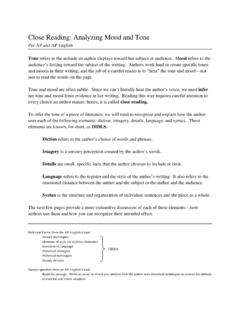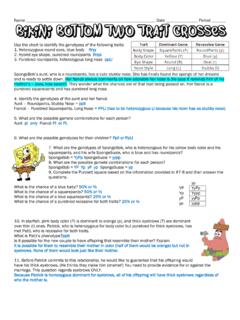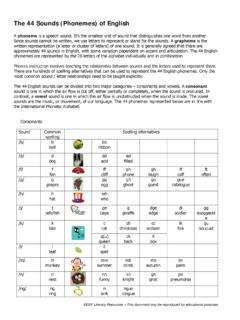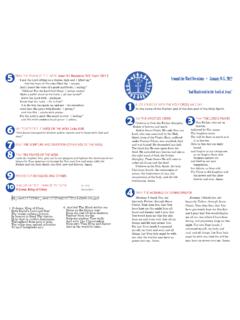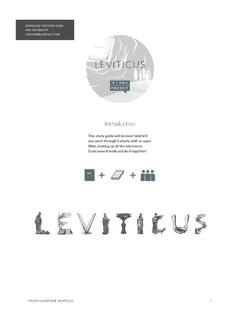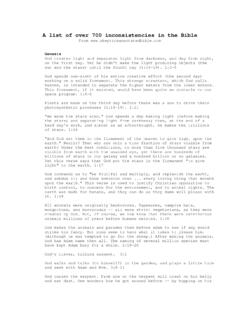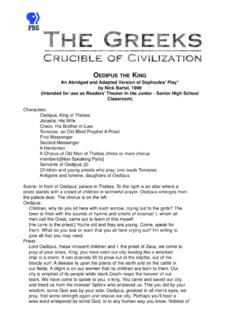Transcription of Identifying Rhetorical Strategies: Logos, Pathos, and Ethos
1 Identifying Rhetorical Strategies: Logos, Pathos, and Ethos Rhetoric: The art of using language persuasively and effectively Logos = Logic The use of logic, rationality, and critical reasoning to persuade. Logos appeals to the mind. Logos seeks to persuade the reader intellectually. Some Examples of Logos Appeal to the mind/intellect Draw from philosophy and logic Facts Statistics If, statements Definitions of terms Explanation of ideas Cause and effect Details that come from objective reporting Logical reasons and explanations Counterargument and rebuttal Pathos = Emotion The use of emotion and affect to persuade. Pathos appeals to the heart and to one s emotions. Pathos seeks to persuade the reader emotionally. Some Examples of Pathos Appeal to the heart/emotion Draw from spirituality or religious traditions Stories or testimonials Personal anecdotes or stories Personal connections Imagery and figurative language that provokes an emotional response Visual images or words that inspire you to empathize or have compassion towards the idea/topic Powerful words, phrases, or images that stir up emotion Details that come from subjective reporting Ethos = Ethics and Credibility The ongoing establishment of a writer s or speaker s authority, credibility, and believability as he/she speaks or writes.
2 Ethos appeals to ethics and character. Ethos seeks to persuade the reader that the writer/speaker can be trusted and believed due to his/her noble character or ethical ways in which he/she is presenting ideas. Some Examples of Ethos Appeal to the writer s/speaker s believability, qualifications, character; relevant biographical information Use of credible sources (experts, scholars) Accurate citation of sources: gives credit where credit is due Experience and authority: person knows the issues and has experience in the field Appropriate language: uses language of the discipline Appropriate tone: knows the audience and context of situation Humility: is not arrogant Uses tentative yet authoritative language; avoids sweeping statements like Everyone is doing this, This is the only way, This will always work. Instead says, The research suggests that, Some experts believe, In my experience, etc.
3




